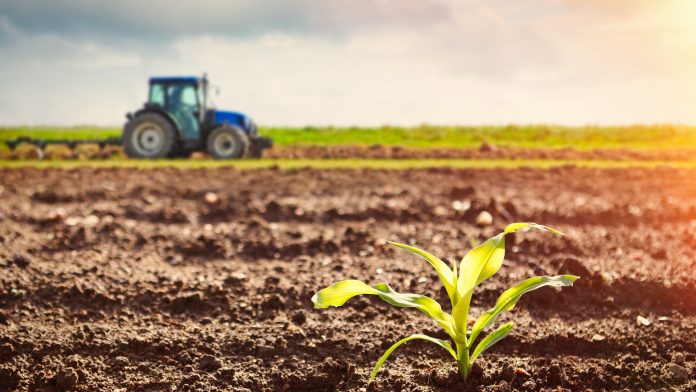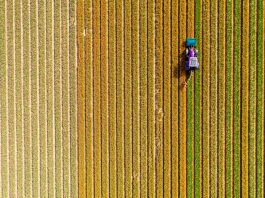A new high-resolution mapping framework, called BESS-STAIR, could provide farmers with an accurate forecasts of crop water.
BESS-STAIR is composed of a satellite-driven biophysical model integrating plants’ water, carbon and energy cycles, the Breathing Earth System Simulator (BESS), with a generic and fully automated fusion algorithm called STAIR (SaTellite dAta IntegRation).
Developed by the US Department of Energy’s Center for Advanced Bioenergy and Bioproducts Innovation (CABBI) at the University of Illinois at Urbana-Champaign, the framework was tested in 12 sites across the US Corn Belt, its estimates have achieved the highest performance reported in any academic study so far.
Published in the European Geosciences Union’s Hydrology and Earth System Sciences journal, the study was led by CABBI’s Postdoctoral Research Associate Chongya Jiang and project lead Kaiyu Guan, Assistant Professor in the Department of Natural Resources and Environmental Sciences (NRES) and a Blue Waters Professor at the National Center for Supercomputing Applications (NCSA).
“BESS-STAIR has great potential to be a reliable tool for water resources management and precision agriculture applications for the US Corn Belt and even worldwide, given the global coverage of its input data,” Jiang said.
Improving existing technology through collaboration
Surface temperature-based methods can only collect data under clear skies, creating gaps in the research. The all-weather BESS-STAIR model uses surface reflectance, which functions similarly on clear and cloudy days.
The STAIR algorithm fused data from two complementary satellite systems, Landsat and MODIS, to provide high-resolution data. Landsat collects detailed information about Earth’s land every eight to 16 days; MODIS provides a complete picture of the globe every day to capture more rapid land surface changes.
“We are able to provide daily, 30m-resolution evapotranspiration anytime and anywhere in the U.S. Corn Belt in hours, which is unprecedented…Precision agriculture is one of our major targets. Evapotranspiration is very important for irrigation and also very important to water management. This is a solution that goes beyond experimental plots and impacts the real world, for millions of fields everywhere,” Guan said.









